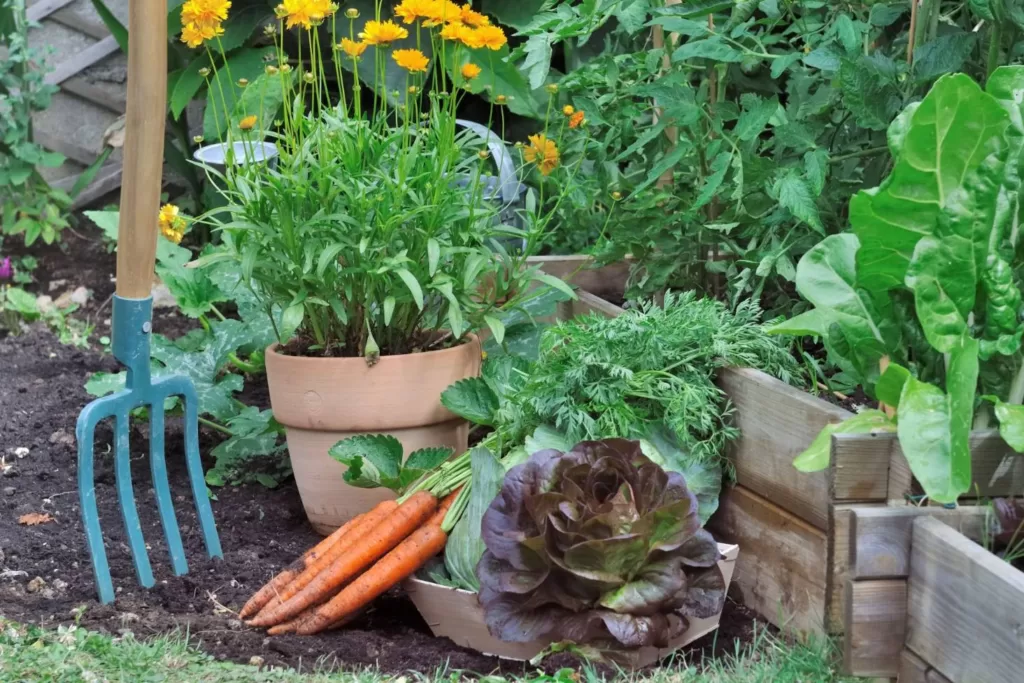Start a Garden: Step-by-Step Guide

Have you ever dreamed of transforming a patch of earth into a vibrant, thriving home garden? Imagine the joy of growing your own fresh produce, the serenity of a lush flower bed, or the satisfaction of nurturing plants from seedlings to maturity. Gardening for beginners can seem daunting, but with the right step-by-step guide, you can turn your dream into a reality. Let's dive in and explore how to start a garden, from planning to plant care tips.
Why Start a Garden?
Starting a garden is more than just a hobby; it's a journey that connects you with nature, promotes well-being, and can even save you money. Growing your own food ensures you know exactly what goes into your meals, and the sense of accomplishment is unparalleled. Plus, a well-maintained home garden can enhance the beauty and value of your property.
Step 1: Garden Planning
Assess Your Space
Before you dive into planting, take a good look at your space. Is it sunny, shady, or a mix of both? Different plants have different light requirements, so understanding your garden's exposure is crucial. For example, vegetables like tomatoes and peppers thrive in full sun, while ferns and hostas prefer shade.
Choose Your Garden Type
There are various types of gardens to suit different needs and preferences. Do you want a vegetable garden, a flower garden, or a mix of both? Consider your goals and the amount of time you can dedicate to garden maintenance.
Select Your Plants
Once you've assessed your space and chosen your garden type, it's time to select your plants. Research which plants thrive in your climate and soil type. For beginners, easy-to-grow plants like herbs, lettuce, and marigolds are great starting points.
Step 2: Prepare Your Soil
Test Your Soil
Healthy soil is the foundation of a successful garden. Test your soil's pH and nutrient levels using a home testing kit or by sending a sample to a local extension service. This will help you determine what amendments, if any, are needed.
Amend Your Soil
Based on your soil test results, you may need to add compost, fertilizer, or other amendments to improve soil quality. Compost is a great all-around soil enhancer, adding organic matter and nutrients.
Step 3: Plant Your Garden
Choose the Right Time
Timing is crucial when it comes to planting. Some plants prefer cooler temperatures and should be planted in early spring, while others thrive in the heat of summer. Consult a planting calendar specific to your region to ensure you're planting at the optimal time.
Plant with Care
When planting, follow the instructions on the seed packet or plant tag. Dig a hole that's the right depth and width for your plant, and gently place the plant or seed in the hole. Fill in the hole with soil, and water thoroughly.
Step 4: Plant Care Tips
Watering
Consistent watering is essential for plant health. Most plants need about an inch of water per week, either from rainfall or supplemental watering. Water deeply and less frequently to encourage deep root growth.
Fertilizing
Fertilizing provides plants with the nutrients they need to grow strong and healthy. Choose a fertilizer that's appropriate for your plants and follow the package instructions for application rates and frequency.
Pruning
Pruning helps maintain plant health and encourages growth. Remove dead or diseased leaves and branches to prevent the spread of disease. Prune to shape plants and encourage bushier growth.
Step 5: Maintain Your Garden
Weeding
Weeds compete with your plants for water, nutrients, and light. Regularly remove weeds to keep your garden healthy and looking its best.
Pest Control
Pests can wreak havoc on your garden. Use organic or synthetic pesticides to control pests, and consider using physical barriers like row covers to protect your plants.
Mulching
Mulching helps retain soil moisture, suppresses weeds, and regulates soil temperature. Apply a layer of organic mulch, such as wood chips or straw, around your plants.
Conclusion
Starting a garden is a rewarding journey that connects you with nature and provides countless benefits. By following this step-by-step guide, you can transform your space into a thriving home garden. From garden planning to plant care tips, each step brings you closer to a beautiful, productive garden. So, what are you waiting for? Grab your gloves and let's get growing!
FAQs
1. What are the easiest vegetables to grow for beginners?
Some of the easiest vegetables to grow for beginners include lettuce, radishes, green beans, and tomatoes. These plants are relatively low-maintenance and provide quick results, making them ideal for new gardeners.
2. How often should I water my garden?
Most gardens need about an inch of water per week, either from rainfall or supplemental watering. Water deeply and less frequently to encourage deep root growth. The frequency of watering can vary depending on the type of plants and the weather conditions.
3. What is the best time of year to start a garden?
The best time to start a garden depends on your region and the types of plants you want to grow. Generally, spring is an excellent time to start a garden, as the soil is warm and the days are getting longer. However, some plants prefer cooler temperatures and can be planted in fall.
4. How can I protect my garden from pests?
To protect your garden from pests, you can use organic or synthetic pesticides, physical barriers like row covers, and companion planting. Companion planting involves planting certain plants together to deter pests naturally.
5. What are some common mistakes beginners make when starting a garden?
Common mistakes beginners make include overwatering or underwatering plants, planting too close together, and not providing enough light. It's essential to research the specific needs of your plants and follow a step-by-step guide to avoid these pitfalls.


0 Response to "Start a Garden: Step-by-Step Guide"
Post a Comment